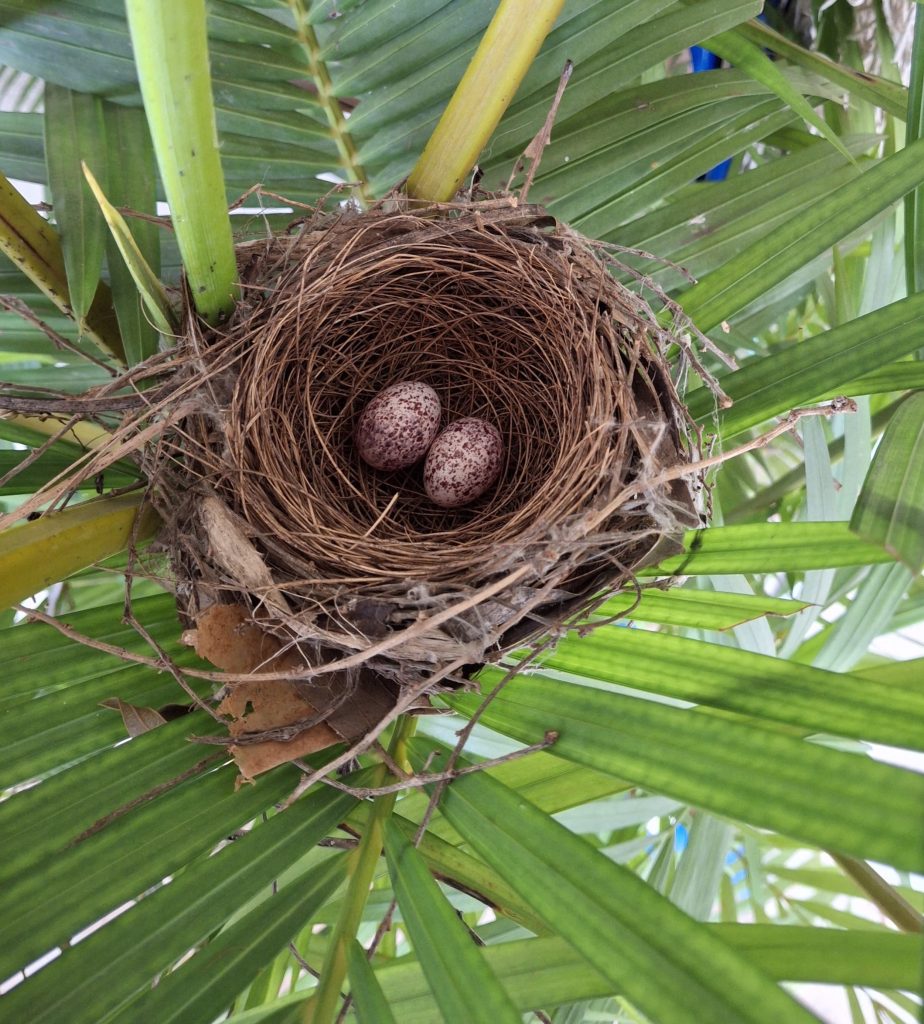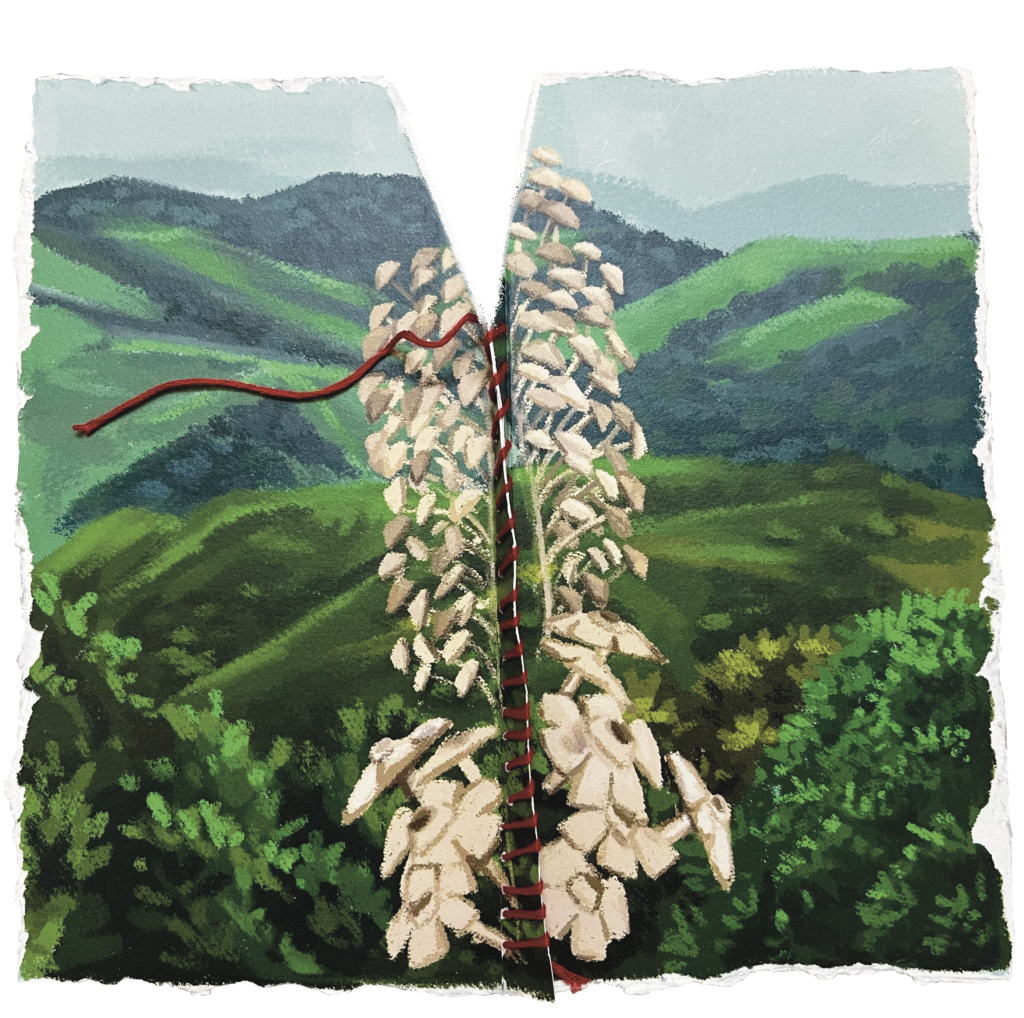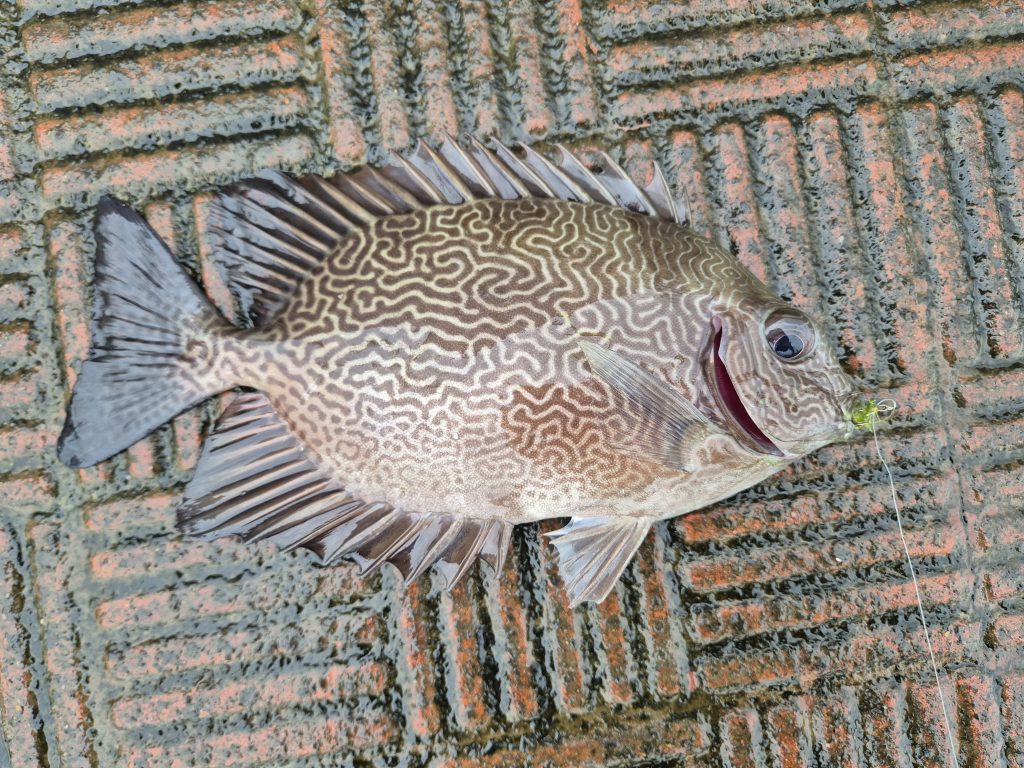It was another stunning morning in the Mariana Archipelago. At 5:20 AM, the moon was setting as the sun’s rays began to shimmer on the horizon. With no land in sight, it felt like waking up on an entirely different planet, complete with wispy violet clouds and piercing azure waters so clear it felt like you could see all the way to the bottom of the Mariana Trench. Our first job of the day was to deploy a 330-m long cabled hydrophone array (complete with a series of underwater microphones) off the back of the Oscar Elton Sette—our National Oceanic Atmospheric Administration (NOAA) research ship—where it would be towed until sunset. This array allowed us to eavesdrop and even determine the position of life hidden below the water’s surface. For this survey, we were in pursuit of marine mammals, specifically cetaceans (whales and dolphins). Little did we know just how busy our serene morning would become as we walked back inside to begin monitoring.
Although it was already 27°C (81°F) outside, the acoustics lab was a brisk 18°C (65°F), forcing us to bundle up as we got our computer systems up and running. Cetaceans produce a wide variety of sounds ranging from high-frequency clicks, whistles, and pulsed calls to low-frequency moans, groans, and tones that can travel over many nautical miles. We use specialised computer software called PAMGuard to visualise those sounds in various ways. For example, some of our monitors displayed spectrograms, scrolling plots of sound representing frequency or pitch (Y-axis) over time (X-axis). Others showed plots of more detailed acoustic measurements as well as the direction from which we received incoming sounds. PAMGuard also contains classification algorithms trained to recognise vocalisations of specific cetacean species which aids us in our interpretation of what we hear and see. The results appear as colour-coded symbols on yet another display. This particular morning, our monitors were blowing up with a mixture of orange and red classifications, indicating a large number of false killer whales (Pseudorca crassidens) in the vicinity, and we needed to localise them all.
False killer whales—a species of oceanic dolphin—are social animals who enjoy being in small subgroups that spread out over a large area. Combine this behaviour with their reputation of being incredibly cryptic and stealthy, and accurate abundance estimates can become rather difficult for scientists. We immediately called up to the bridge to request that the ship maintain speed and direction while we frantically localised and logged each new subgroup that appeared on our monitors. Our adrenaline was pumping as subgroup after subgroup passed us by. We were surrounded! Yet despite the cacophony of whistles, clicks, and burst pulses lighting up our monitors, our team of visual observers searching from the flying deck (highest platform on the ship) had seen nothing! Moments like these are an important reminder that no one method of surveying is superior to another in marine conservation research. Marine animals can be seen and not heard, or heard and remain unseen. That’s why NOAA has specific protocols in place to ensure the collaboration between multiple methodologies.

We let out a huge sigh of relief as the ship drove past the last subgroup of false killer whales, but we weren’t done yet. It was time to alert the visual team to the presence of this large family of cetaceans, turn our ship around, and combine forces to get an even better estimate of the number of individuals present. Grabbing the radio, we informed the visual team it was time to initiate the false killer whale protocol. Their response: ‘Bring it on!’ We then immediately hailed the bridge and requested a 180° turn. That’s right, we were officially in charge of steering our 1,827-tonne ship. As the Sette made the turn, we monitored the incoming localisations from the very chatty subgroups. Given the linear shape of the towed array, our system was incapable of differentiating between the left and right of the ship during our first pass; our localisations gave us bearings and distances from both sides of the Sette. Therefore, the visual team would have double the locations to investigate. However, vocalisations that continue as the ship turns will move across our monitor in such a way that we can determine their exact location. Thankfully, that’s exactly what happened. We could now direct the Sette towards each subgroup and tell the visual team exactly where to look.
The situation quickly became stressful; we called out position after position over the radio for the visual team to search to no avail. The false killer whales seemed determined to remain hidden below the surface despite our best efforts. Almost 20 minutes of searching passed with no visual confirmation. Time was running out before our cruise leader would determine our combined effort ineffective and send us back onto the survey track line. As an acoustician in this situation, emotions run high. The experience is as frustrating as it is humbling to realise that despite all the technology and talented team members at your disposal, we will always be at the mercy of the animals we wish to protect; you can’t train wild animals to make an appearance. As each subgroup came closer to our ship with each passing minute, we repeatedly begged them to surface! Our pleading desperation must have successfully radiated through the hull of the ship, and not a moment too soon as boisterous cheers rang out over the radio along with the declaration of visual confirmation at last!
Our false killer whale protocol was a success. We logged each subgroup we heard, noting those confirmed by the visual team, while also listing who had remained silent but surfaced for our visual team to see. Thanks to the efforts of our visual team, we had acquired visually verified recordings of false killer whales which, for an acoustician, is synonymous to obtaining the Holy Grail! Such recordings leave no doubt that a particular vocalisation is associated with a particular species and can subsequently be used to develop automated classification algorithms. Development of these kinds of algorithms is unquestionably the future of acoustic monitoring as the amount of data acousticians collect continues to grow exponentially. I’m talking petabytes… that’s millions of gigabytes! There is so much data that we simply do not have the resources to manually analyse it through human action alone. Excitingly enough, our very own lead acoustician had recently developed such a classifier for false killer whales earlier in the year, using visually verified recordings taken around the Hawaiian Islands. By incorporating these additional recordings from a different part of the world into her algorithm, she will help eliminate any site-specific biases that may exist within it by accounting for possible differences in dialects, ultimately increasing its accuracy in classifying this species globally. Fact: An automated classifier is only as good as the data on which it has trained.

Later that night I lay reflecting on the rewarding chaos that was our morning. It had been an incredible day of progress and I felt so proud to be a part of the team. The data we collected will help answer many uncertainties about cetaceans in this data deficient region of the world (e.g., estimations of their occurrence and abundance and information on their population structure). The data will also be utilised by the U.S. Navy in their modelling efforts to assess and mitigate the potential impacts of their activities on these amazing creatures. While I continued to reflect on the day, I checked that the alarm on my watch was set for 2 AM. A few weeks ago, our team had deployed a passive acoustic recording device called a DASBR (Drifting Acoustic Spar Buoy Recorder1) to drift with the ocean currents, hoping to record the vocals of cetacean species that tend to avoid passing ships. I was going to be part of the team to search the moonlit waters for its reflective buoy component on the surface of the sea so we could bring it home. Just another day in the life of a marine bioacoustician.
Want to hear more about the adventures aboard the 2021 Mariana Archipelago Cetacean Survey (MACS)? Check out the online story map for the entire 59-day ship survey at https://arcg.is/1KaPaW!
Further Reading
Gillespie, D., D. K. Mellinger, J. Gordon, D. McLaren, P. Redmond, R. McHugh, P. Trinder et al. 2009. PAMGUARD: Semiautomated, open source software for real-time acoustic detection and localization of cetaceans. The Journal of the Acoustical Society of America 125(4): 2547–2547.
Wall, C. C., S. M. Haver, L. T. Hatch, J. Miksis-Olds, R. Bochenek, R. P. Dziak and J. Gedamke. 2021. The next wave of passive acoustic data management: How centralized access can enhance science. Frontiers in Marine Science 8: 873.
McCullough, J. L., A. E. Simonis, T. Sakai and E. M. Oleson. 2021. Acoustic classification of false killer whales in the Hawaiian Islands based on comprehensive vocal repertoire. JASA Express Letters 1(7): 071201.





